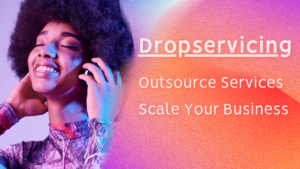
Shopify, the e-commerce platform that revolutionized online shopping, continues to be a dominant force in 2025. While the company faced some challenges in recent years, it has emerged stronger than ever, demonstrating its ability to adapt to changing market dynamics and capitalize on emerging trends.
A Look Back: Shopify’s Rise to Prominence
Founded in 2004, Shopify quickly gained traction by offering a user-friendly platform for businesses of all sizes to establish their online presence. The company’s innovative approach, coupled with its commitment to providing a seamless shopping experience, propelled it to the forefront of the e-commerce industry.
Navigating Challenges and Embracing Opportunities
In recent years, Shopify faced headwinds such as increased competition from other e-commerce platforms and shifting consumer preferences. However, the company responded proactively by investing in new technologies, expanding its product offerings, and forging strategic partnerships.
One of the key factors contributing to Shopify’s continued success is its ability to adapt to evolving consumer behavior. The rise of mobile commerce and social shopping has presented new opportunities for retailers, and Shopify has been at the forefront of these trends. The platform’s integration with social media platforms and its focus on mobile optimization have enabled merchants to reach a wider audience and drive sales.
Shopify’s Profitability in 2025

Shopify’s profitability in 2025 is a testament to its resilience and strategic vision. The company has demonstrated a strong track record of revenue growth and profitability, driven by factors such as:
- Expanding Merchant Base: Shopify continues to attract new merchants, particularly small and medium-sized businesses, who are drawn to its ease of use and comprehensive suite of tools.
- Increased Merchant Spending: Existing merchants are investing more in Shopify’s platform, opting for premium plans and additional services like shipping, payments, and marketing.
- Global Expansion: Shopify’s international expansion has been a key driver of growth, with the company establishing a strong presence in markets outside of North America.
- Strategic Partnerships: Collaborations with major brands and payment providers have strengthened Shopify’s position and expanded its reach.
Key Factors Driving Shopify’s Future Growth
Several factors are poised to drive Shopify’s continued growth and profitability in the coming years:
- Artificial Intelligence and Machine Learning: Shopify is leveraging AI and ML to enhance personalized shopping experiences, optimize marketing campaigns, and improve customer service.
- Headless Commerce: This emerging trend allows merchants to decouple the front-end and back-end of their e-commerce stores, providing greater flexibility and customization options.
- Social Commerce: Shopify’s integration with social media platforms enables seamless shopping experiences, driving increased sales and brand awareness.
- Subscription Commerce: The subscription model is gaining popularity, and Shopify’s tools and features are well-suited to support this growing market.
Shopify Themes: How to Choose the Perfect Design for Your Online Store?
A well-designed Shopify theme is crucial for creating a visually appealing and user-friendly online store. Shopify offers a wide range of themes, both free and premium, to cater to various business needs and aesthetic preferences.
Key Factors to Consider When Choosing a Shopify Theme:
- Responsiveness: Ensure the theme is fully responsive, adapting seamlessly to different screen sizes (desktop, tablet, and mobile) for optimal user experience.
- Customization Options: Look for a theme that offers flexibility to customize colors, fonts, layouts, and other elements to match your brand identity.
- Speed: A fast-loading theme is essential for improving user experience and boosting SEO.
- SEO Friendliness: Choose a theme that is optimized for search engines, with features like clean code, meta tag support, and sitemap generation.
- E-commerce Features: Consider the theme’s built-in e-commerce features, such as product filtering, product reviews, and cart functionality.
- Support and Documentation: Look for a theme with reliable customer support and clear documentation to help you with any issues.
Where to Find Shopify Themes:
- Shopify Theme Store:
- Free Themes: Shopify offers a selection of free themes that are well-designed and easy to use. While they may have fewer customization options, they’re a great starting point for small businesses.
- Premium Themes: The Shopify Theme Store also offers a wide range of premium themes, created by professional designers. These themes often come with advanced features, premium support, and more extensive customization options.
- Third-Party Theme Stores:
- TemplateMonster: Offers a variety of Shopify themes, including free and premium options.
- ThemeForest: Another popular marketplace for Shopify themes, with a wide range of choices.
Popular Shopify Themes:
While the best theme for your store will depend on your specific needs, here are a few popular options:
- Scrowp : The 3 in 1 premium Shopify theme designed for speed, SEO and conversions.
- Dawn: A clean and modern theme that is highly customizable and SEO-friendly.
- Sense: A minimalist theme perfect for fashion and lifestyle brands.
- Supply: A versatile theme suitable for a variety of businesses, offering a clean and professional design.
- Venture: A bold and modern theme with a focus on visual storytelling.
- Craft: A minimalist theme ideal for showcasing high-quality products.
Remember, the best theme for your store is one that aligns with your brand’s identity and provides a seamless shopping experience for your customers. By carefully considering the factors mentioned above and exploring the available options, you can find the perfect Shopify theme to elevate your online store.
Conclusion
Shopify’s ability to adapt to changing market dynamics and invest in innovative technologies has solidified its position as a leading e-commerce platform. While challenges may persist, the company’s strong fundamentals, strategic focus, and commitment to customer success position it for continued growth and profitability in 2025 and beyond.





